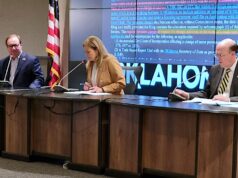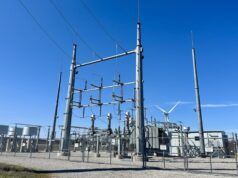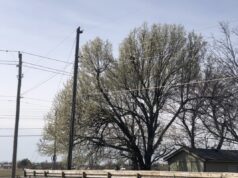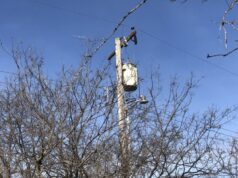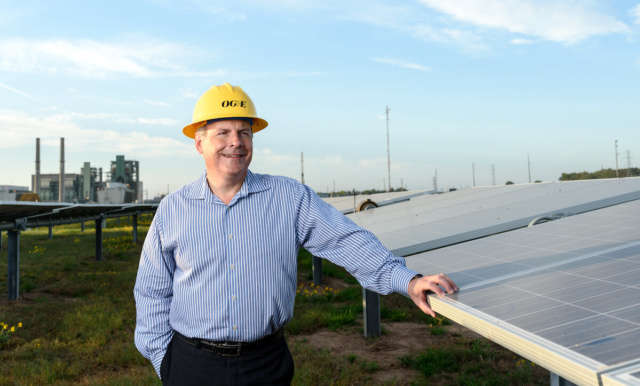
Solar energy is on the upswing in Oklahoma, as the Oklahoma Electric Cooperative and Oklahoma Gas & Electric have begun significant investment around the renewable energy resource.
With solar gardens and solar farms popping up around the Oklahoma City metro area, the alternative energy source appears to be gaining a foothold locally after years of cloudy days kept it in the dark.
OEC: ‘A diversified portfolio’
OEC, the state’s largest energy co-op, is in the final stages of building a three-acre, 950-panel solar garden in a median of I-35 in north Norman.
The Norman-based co-op, which serves more than 55,000 meters in seven central Oklahoma counties, is adding solar power to a renewable-energy portfolio that represents 25 percent of OEC’s overall energy output.
The move to add solar energy as an offering to consumers may be a relatively new concept in Oklahoma, but that is mostly due to concerns about the costs, industry representatives say.
“One of the greatest barriers of solar power for the individual consumer is the initial cost to set it up and the ongoing maintenance,” said Autumn McMahon, community relations coordinator for OEC. “In order to best serve our membership, we have committed to making this investment for them so they can reap the benefits of the renewable energy.”
Another problem with solar energy, McMahon said, is the problem with storing the resultant power at night or during overcast days. Oklahoma ranks seventh in the nation in solar energy potential, but that doesn’t help overcome the realities of storage issues.
“Solar energy is an important piece of our renewable energy portfolio; it cannot, however, currently be stored,” McMahon said. “In other words, if the sun is not shining — at night or on a cloudy day — it is not reliable by itself. That is why we focus on keeping a diversified portfolio of energy sources.”
Cost still a barrier, but gap slowly closing
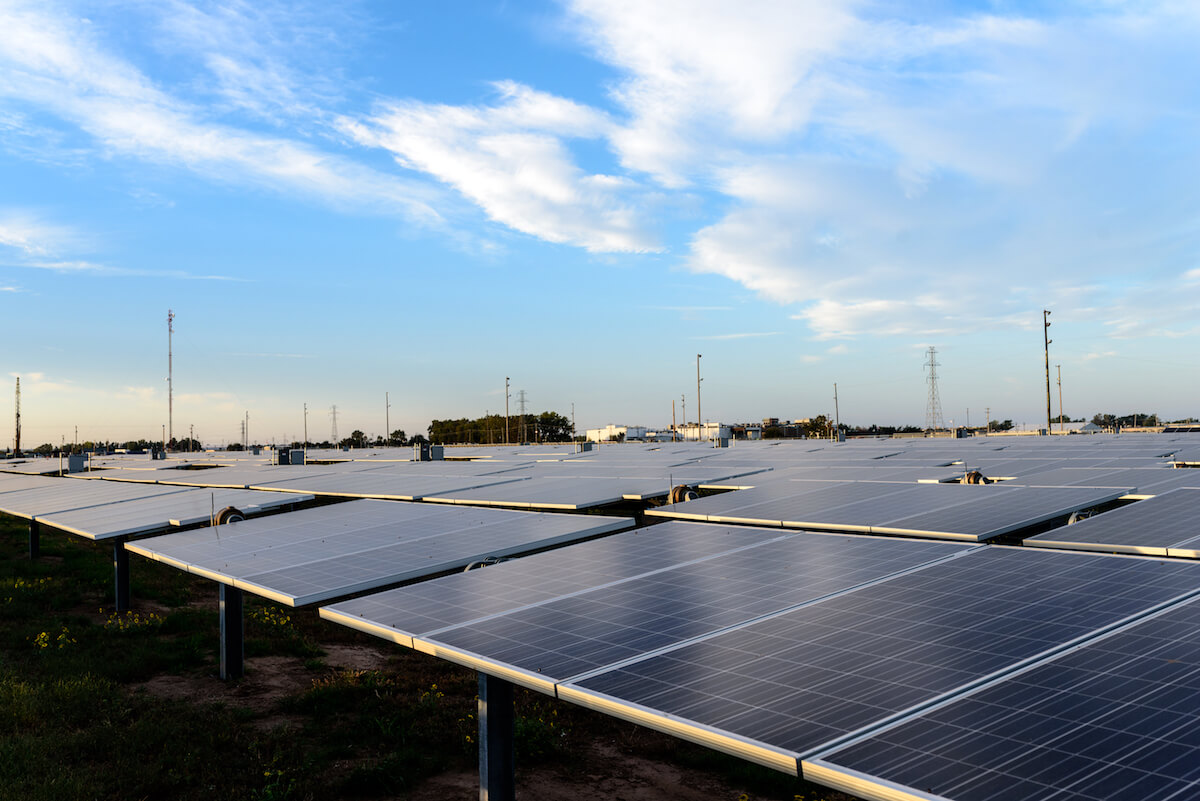
Also building its commitment to solar energy is OG&E, which has two solar farms located at the company’s Mustang power plant.
Although close to one another, the two solar farms operate differently. Each draws power from the sun, but the panels on one farm never move while the other has a mechanism to track the sun’s path across the sky. The company completed both farms in 2015 with the goal of gauging which method will provide the most value.
Scott Milanowski, OG&E’s director of product delivery, agreed that the cost of batteries to store solar energy doesn’t make it cost-efficient yet for solar power to be on equal ground with other energy resources such as natural gas, coal or even wind power. He said the system already loses up to 80 percent of its power when clouds block the sun, which is why OG&E still relies on a power grid that uses a combination of solar power and other traditional sources to ensure a consistent energy flow regardless of the time of day or weather conditions.
Milanowski said the technology was too new to predict how long it would take for solar to become more of a cost-effective way to power homes and businesses, but he said the numbers are moving closer.
Milanowski explained that, currently, the standard residential rate for electricity is about $0.09 per kilowatt-hour (kWh) while solar power is at $0.1073 under a special solar tariff that was recently approved by the Oklahoma Corporation Commission. Under this new solar tariff, customers may subscribe to purchase up to 50 percent of their energy needs from OG&E’s new solar farms.
“It may cost them a few pennies more now, but in the future they will probably save,” he said, adding that OG&E anticipates solar power will likely be a bigger piece of the company’s portfolio in the future.
Businesses looking to solar energy
Customers were overwhelmingly responsive to the OG&E program that offers solar power as an alternative to electricity produced with fossil fuel, Milanowski said. He said the program is at 100 percent capacity as of this month and is now taking customer names on a waiting list. OG&E recently added 600 homes at Tinker Air Force Base for 20 percent solar power, and OnCue has also recently signed up to use solar power.
These companies are among those that have the ability to use solar power, but Milanowski said there is often a range of obstacles to businesses or residential properties being able to install a complete rooftop solar energy system. For starters, he said you must be the property owner, the roof must face the right direction, there should be no trees or obstructions blocking the sun, and the property owner must have a good credit rating.
“With our solution, it’s available to every OG&E customer, whether you have a roof or not,” Milanowski said of the utility’s solar power program.
Doing the math on solar installs
The U.S. Energy Information Administration estimates residential energy rates to increase as high as 83 percent over the next 25 years. With solar power costs fixed over that same period, the time might be right for solar power to become a more likely source of energy for Oklahomans.
Rather than waiting for the future, Oklahoma Solar, a solar panel-installation company with offices in Tulsa, claims solar energy is a viable option today. For a 2,000-square-foot residence in Tulsa, the company claims it would take about 15 years for the system to pay for itself. For a commercial property with a flat roof in Oklahoma City, the system could pay for itself in only seven years thanks to some tax incentives geared specifically toward businesses.
Some controversy has surrounded rooftop solar energy generation in Oklahoma. In April, the Oklahoma Corporation Commission voted against a separate OG&E tariff proposal regarding “distributed generation.” That plan was widely decried as an attempt to minimize the economic benefits that people derive from installing their own solar panels, though the company said it was simply trying to recover grid costs from those customers.
For any system, experts say to expect equipment and installation to be responsible for the bulk of the costs, with about 60 percent of costs related to the former and 30 percent for the latter. Ten percent of overall costs goes into sales and operation, according to Oklahoma Solar.
Solar power may currently be at the bottom in terms of alternative energy options, but there is hope that it may one day become a more viable power source in Oklahoma.
OEC anticipates a solar farm opening in Tuttle sometime next year, and a growing number of companies are adding solar power to their energy portfolio offerings.











